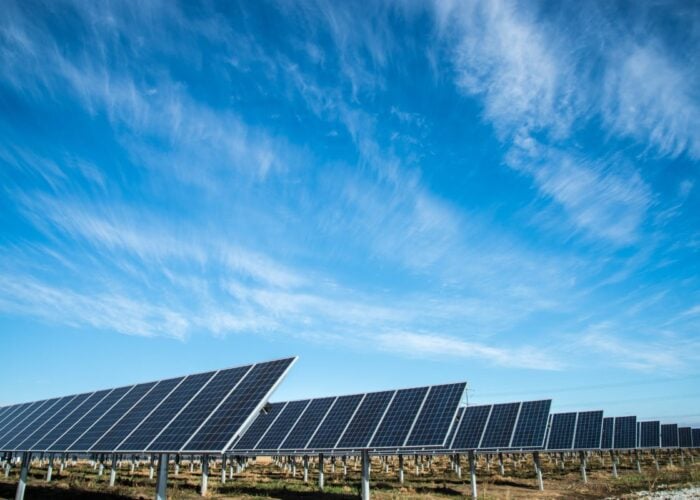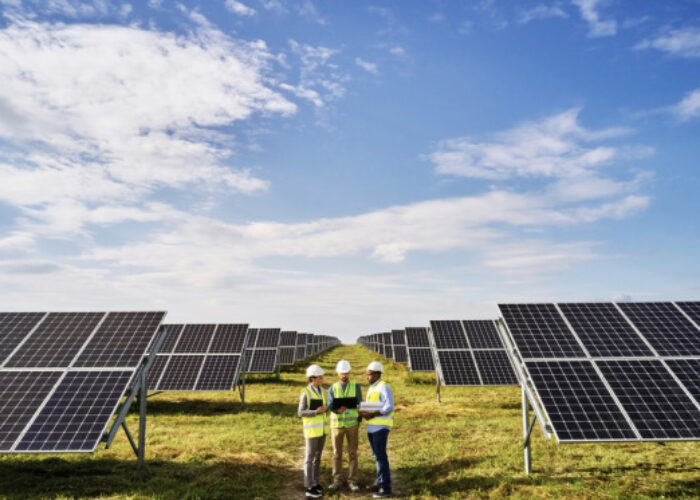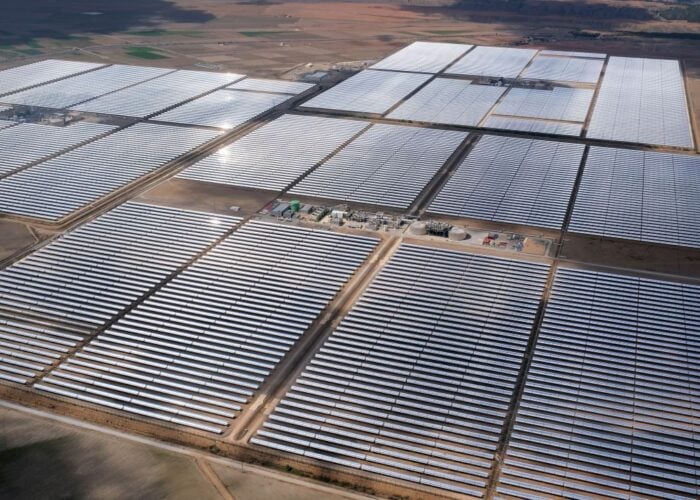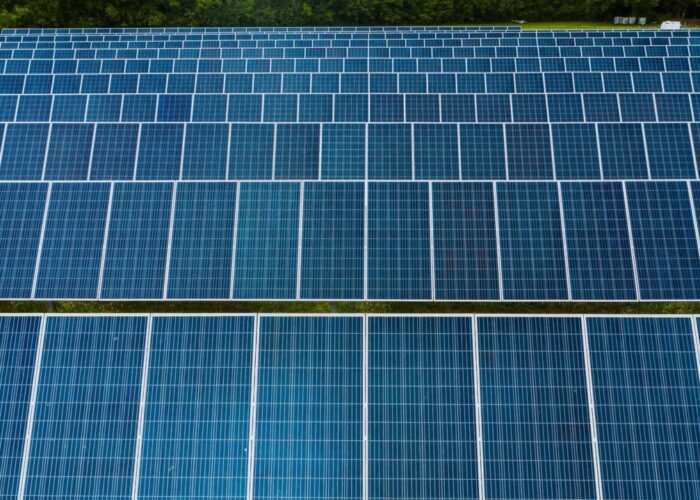
Having jostled for the title for some time, the International Energy Agency made headlines late last year when it crowned solar PV as the new “king of electricity markets” worldwide, ahead of wind, hydropower and all other generation technologies. Citing drastic reductions in price over the last decade in particular, the IEA – which is reasonably famed for having underestimated solar PV’s potential in the past – projected that solar would smash deployment records in each year from 2022 onwards, becoming the preeminent source of power in Europe by 2025.
That projection came within the IEA’s World Energy Outlook report for 2020, wherein all of the association’s models projected that renewables would grow rapidly over the coming decade. Solar, however, was said to be at the centre of that growth, a mixture of maturing technologies and supportive policies opening up ultra-cheap access to capital and, in turn, cheaper routes to market. Solar is now consistently cheaper than new gas and coal in numerous markets, with the IEA concluding solar to be offering “some of the cheapest electricity ever seen”.
Unlock unlimited access for 12 whole months of distinctive global analysis
Photovoltaics International is now included.
- Regular insight and analysis of the industry’s biggest developments
- In-depth interviews with the industry’s leading figures
- Unlimited digital access to the PV Tech Power journal catalogue
- Unlimited digital access to the Photovoltaics International journal catalogue
- Access to more than 1,000 technical papers
- Discounts on Solar Media’s portfolio of events, in-person and virtual
While hydropower remains the largest single source of renewable power, solar will be the main driver of growth in the coming years, the IEA states. Under the associations ‘Stated Policies’ or STEPS model, wherein the impact of existing policy frameworks is modelled, solar generation output is expected to hit 4,813TWh per year by 2040. The ‘Sustainable Development Scenario’ or SDS models how a radical, Sustainable Development Goals (SDG)-compliant energy market may look, and that places solar PV output at a significant 8,135TWh in the same time frame.
While the IEA models are not designed to be projections or forecasts as such, solar PV would be worthy of its crown should the asset class deliver the kind of growth modelled by the association. “If governments and investors step up their clean energy efforts in line with our Sustainable Development Scenario, the growth of both solar and wind would be even more spectacular – and hugely encouraging for overcoming the world’s climate challenge,” Faith Birol, executive director at the IEA, said at the time of the 2020 Outlook’s release.
Solar’s path to the throne has been carefully plotted, and indeed the technology looks all but set to ascend. But what are the steps needed, from a technological, regulatory and financial perspective, to grasp that mantle?
“If governments and investors step up their clean energy efforts in line with our Sustainable Development Scenario, the growth of both solar and wind would be even more spectacular.”
Faith Birol, IEA
Technology driving change
If solar PV is to truly become the king of new power generation, it will owe its crown to consecutive years of technology price reductions. More efficient panels and emergent technologies have dragged down LCOEs to such an extent that already newbuild solar is cheaper than coal and gas in markets such as Spain, Italy, India and 16 US states. By 2030, that will be true in more than 15 established markets, analysis by consultancy WoodMac claims.
Large-area wafers and modules, bifaciality and trackers are contributing to that more cost-effective power generation, but a host of other technologies could yet drive costs down even further. Heterojunction and TOPCon solar cells are widely anticipated to boost efficiencies even further – JinkoSolar having established a new record conversion efficiency of 24.9% for its N-type TOPCon monocrystalline solar cell earlier this year.
But these technologies are still some years away from commercialisation and, as a result, should not be included in any prospective roadmap to industry dominance for solar PV, at least not for the time being. WoodMac asserted that it had not factored such novel technologies into its analysis, stating they could yet provide even further cost upside. Jenny Chase, head of solar at research organisation BloombergNEF, says however that these maturations or evolutions in technology “might knock another cent per watt off” the cost of generating power, but much of the heavy lifting has already been achieved by industry standard modules.
Considerable importance will therefore be placed on existing technologies and, critically, ensuring they are in abundant supply. Thankfully solar appears ready to cater for this shift in demand. Most industries spent 2020 navigating the impact – solar PV has, of course, been no exception to that – but last year also bore witness to a significant gear-shift for upstream solar manufacturing. Major solar cell and module manufacturers announced major commitments to capacity expansions which, combined, point to the solar industry having ample supply for any sizeable leap in demand and deployment.
There had been some concern over the availability of materials and components towards the end of 2020. Polysilicon supply, stymied by incidents at production facilities in China, had caused price spikes as demand continued to soar. Likewise, demand for solar-grade glass in China sent prices soaring to such an extent several manufacturers lobbied the government to intervene. While prices are likely to remain high – BloombergNEF expects average selling prices (ASPs) for polysilicon to stabilise at around US$12/ kg this year, around double the ASP noted by some providers at the start of 2020 – there will be no shortage of supply. Modules will, too, be abundant enough to cater for demand throughout the 2020s, even if larger-format modules are to come at a premium cost. Indeed, PV Tech analysis of announced capacity expansions highlights an estimated joint capacity from the nine largest module manufacturers of 250.5GW by the end of 2021, with not insignificant quantities of that capacity earmarked for larger-area modules.
There are also renewed efforts to establish a manufacturing base in Europe to cater for any additional demand in the region, efforts which have received backing from the European Commission. In late February, trade association Solar- Power Europe partnered with innovation engine EIT InnoEnergy to launch the European Solar Initiative, a drive to revive Europe’s PV manufacturing industry to capture the 20GW of added annual solar demand that’s set to emerge on the continent this decade. Diego Pavia, CEO at EIT InnoEnergy, said the mixture of policy, low cost capital and historic success of technology development in Europe made for “fertile ground for a rebirth of European PV”. To date, the most notable manufacturer to outline serious plans to manufacture solar panels in Europe is Meyer Burger.
Modules are, however, just a single piece of the broader puzzle. For solar to reach its potential the entire supply chain must travel the same path. There is now a broad consensus within the industry that more collaborative efforts, such as the Trina Solar-led Open Innovation Ecological Alliance, are vital to the success of the collective. “The entire PV industrial chain should work together to attain the common goal, encourage more interactions and collaborative innovation involving upstream and downstream enterprises, so as to reduce LCOE and to make the PV power generation applications more economical,” Dennis She, senior vice president at LONGi Solar, says, also pointing to the need for more standardisation within product lines.
In February 2021, eight of the world’s leading tracker manufacturers said they had approved products for use in new large-area modules, following inverter manufacturers who had committed to releasing compatible products this year. James Wu, vice president at inverter manufacturer Sungrow, says the company has committed a “massive R&D task force” in order to “push the boundaries of innovation” and develop a suite of products for use by “the whole industry”.
Technology will play a considerable role in elevating solar to become the eminent source of power globally, and has arguably already pushed the asset class into a dominant position. The key now is its ability to beat all comers on a cost basis, which solar is doing with growing ease.
Cost competitive power the world over
Solar is emerging as the king of new power markets principally because it can beat all comers on a cost basis, delivering the cheapest power available in auctions, tenders, and even on wholesale markets. The most recent IEA analysis of levelised cost of electricity (LCOE), released at the end of last year, produced a median price for solar generation of US$56/MWh, with lows of US$34/MWh recorded globally. Chase concurs with the low end of those figures, stating that if a new build project in Spain is offering €35/MWh (US$42.5/MWh) for a power purchase agreement (PPA), then “you’ll probably get take up”.
Those projections are also being borne out in the field. France’s most recent tender for large-scale projects, the ninth such auction it has launched, attracted average bids of €53.83/MWh (US$65.83/MWh). A recent auction in India for 6.4GW of capacity in Andhra Pradesh attracted a lowest bid of US$33.9/MWh. The most recent Spanish renewables auction, which awarded 2GW of capacity contracts to solar, attracted an average winning for solar of €24.4/MWh (US$29.5/MWh), however the lowest bid – tabled by developer Ignis – came in at just €14.8/MWh (US$18/MWh). But even that figure was not low enough to limbo beneath prices recorded in Spain’s neighbour to the west. The €11.14/ MWh (US$13.12/MWh) recorded in last year’s auction surpassed the Portuguese government’s – and many in the industry’s – wildest expectations, creating anticipation for what might be delivered in the country’s third auction later this year.
Fortunately for solar, there is no looming shortage of auctions in which to demonstrate this LCOE prowess either. Analysis by WoodMac published earlier this year stated there to be 45GW of renewables auctions planned in 2021 in Europe alone. 6GW of that figure is earmarked just for solar, while a further 22GW of technology-neutral auctions will see solar compete against other technologies. If the asset class’ performance in tenders to date is anything to go by, it’ll be a brave generator to fancy its chances against solar PV.
Costs have fallen to such an extent already that it begs the question, how low can solar go? Jenny Chase is of the opinion that LCOEs will continue to fall, albeit not as drastically as they might have done until now. Having witnessed the cost of technology tumble in the past decade, developers are now having to squeeze pips elsewhere. While increases in module efficiency will of course be welcomed, larger-format modules provide benefits to the Balance of System (BOS) cost and bifaciality can boost yields anywhere from 5 – 10% (see p.42), the cost of hardware is no longer the “main driver” for cost declines, Chase adds.
Instead the focus has been drawn to soft costs, but these have proven more stubborn to come down. “The issue here is a lot of these soft costs are quite value based, they’re literally a matter of finding the right paperwork and waiting until you get the get the permission, and then you can sell that paperwork for whatever you like. The price you can put it at is the cost of building a solar plant, but it’s also based on how much you can sell the power for,” Chase explains.
“the role of policy now is no longer making sure solar gets paid an above market price, it’s making sure solar can sell power at all and that it is actually possible to build a solar project.”
jenny chase, bloombergnef
The key to bringing soft costs down further will be scale. The cost of site design, obtaining planning permissions and all the other necessary paper and office-based tasks are therefore less per megawatt deployed, spreading that portion of the CapEx across a wider base. The industry is too becoming better at navigating the rigours of project design, and the scales at which some multinational developers are operating at can only deliver significant economies of scale benefits.
CapEx figures on the whole will continue to fall. BloombergNEF expects the cost of developing a typical, 100MW utility-scale solar system to fall from around US$0.58c/Wdc this year to around US$0.49c/Wdc in 2025. The rate may be steadier than previous collapses, but tangible all the same. A problem that may be all the harder to solve is, however, further up the chain.
Fixing the grid
Having hurdled the cost barrier so competently, the last true obstacle to solar’s dominance is somewhat out of its hands. National grids, many of them reliant on decades-old infrastructure, are poorly suited to a modern electricity system and, as a result, congested. Sungrow’s James Wu highlights grid instability, alongside PV clipping losses and the desire for lower LCOEs, as one of the few remaining “difficult nuts to crack”. The inverter manufacturer believes the solution to grid challenges is to embrace more solar-plus-storage solutions.
But they still require a grid connection agreement, which in some jurisdictions are not necessarily worth their weight in gold, but certainly cost bullion-esque fees. Chase says that in Spain – a nation where grid congestion is particularly problematic – fees could reach as much as €200,000 per megawatt for the connection and site approval. Grid connection fees in the UK have also been described as “astronomical” by developers.
There are various ways of smoothing the grid connection process (as discussed in PV Tech Power Volume 25), but there is little escaping the fact that without costly investment, either through hardware (pylons and cables) or software (flexibility systems leveraging smarter power), further growth of solar power will be stymied by the grid.
The IEA’s World Energy Outlook 2020 narrowed on in the issue, arguing that electricity networks have a “central part to play” in unlocking flexibility from power plants, that flexibility being the “cornerstone” of modern power. The prevailing issue is, according to the IEA, that transmission system operator revenues tumbled in 2020 amidst the COVID-19 pandemic and could take some time before they recover. With the IEA forecasting that as much as US$460 billion worth of grid investments would be needed worldwide by 2030, the problems facing the grid take on an enormous scale. BloombergNEF’s Power Grid Long-Term Outlook 2021 argues that power grid investments will need to top US$636 billion by 2050 to replace existing infrastructure, serve new power demand and support greater renewables penetration.
Aside from investment, policy could also play a key enabling role in easing grid concerns and pathing the way for more solar to come onstream. While solar policy support is most commonly considered as subsidies or fiscal incentives, the policy demands of solar PV have evolved just as much as the technology itself. Now, it’s about clearing the way, and not so much about identifying what can help solar, but about removing what can stop it.
“Policy is still hugely important because in a lot of places in the world, there is a high degree of central planning. Even in places where there are not a high degree of central planning, you often find big utilities and government and state-owned enterprises having control over who accesses the grid. So I would say the role of policy now is no longer making sure solar gets paid an above market price, it’s making sure solar can sell power at all and that it is actually possible to build a solar project,” Chase says.
This could come out of closer collaboration between developers, grid operators and policymakers, and efforts are afoot to facilitate these discussions through trade bodies such as Eurelectric. Governments will play a vital role in rescinding some of that red tape, however, especially in nations with ambitious climate targets on the line. “There needs to be collaboration, and sometimes policymakers do need to take the lead and say, Look, I know this is not trivial, but you can’t just ban solar, which is of course the easiest thing for the grid to do,” Chase says.
Terawatts and beyond
Having wrestled control of the throne, solar is showing no signs of abdicating it any time soon. After a COVID-19-led blip in 2020, solar deployments look set to surge back into the ascendancy this year, BloombergNEF forecasting that as much as 209GW could be installed. Quite how much exactly is installed – the research organisation’s range is sizeable at 160 – 209GW – will depend on actual activity in selected markets, most notably China which could install anywhere from 65 – 75GW as it shifts gear in pursuit of an ambitious net zero target, to developers’ collective ability to hurdle those grid barriers.
Solar will also be more diverse geographically, with no fewer than 20 so-called ‘gigawatt markets’, where more than 1GW of solar is installed, in 2021. Old hands such as China and the US joined by relative newcomers such as Poland. Installs will keep on coming, too. BloombergNEF’s optimistic figures place installs at 221GW in 2022 and 240GW in 2023. Having passed the 500GW installed capacity threshold in 2018, it is widely anticipated to pass the terawatt mark either later this year or early next, depending on movements in notable markets. There is every indication that solar PV won’t have to wait long for its next terawatt either, with the IEA’s SDS and Net Zero 2050 models forecasting this to happen by 2026 at the latest.
Solar’s rise has been meteoric, but it has been no overnight success story. The hundreds of gigawatts deployed this year and the terawatts that go on to be deployed over the next decade will owe everything to the kilowatts and megawatts deployed in years previous, charting the course. Solar may be the new king of electricity, the world’s eminent source of renewable power but, in reality, this is merely the end of the beginning.







